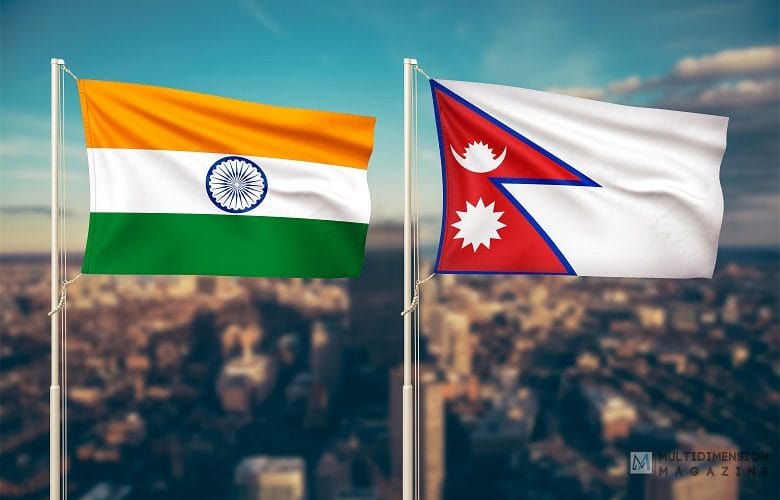Written by : Dr. Anup Shekhar Chakraborty, Kolkata
Photo credit : Shutterstock.com
The Virtual Neighbourhood
Virtual communities are places/sites where people meet, and they also are tools; the place-like aspects and tool-like aspects only partially overlap. Cyberspace opens the possibility to disengage the constrictions in the existing notions of neighbours, neighbourhood, and neighbourhood spaces. The virtualization of the neighbourhood effectuates matrixes of alleys ‘cyber mohalla’, where much like the bazaar (market), gossip/chattingthe connecting link between people is made. Through such gossip/chatting and group interaction, the raw material for ‘Peoplehood’ (South Asians, Gorkhas/Nepalis, Indians, etc.) is reproduced in the virtual space towards ‘a community-in-building’ in the neighbourhood (real and virtual). ‘Communities’ in the virtual neighbourhood resemble real-life ones (everyday lived spaces) and require an act of imagination, ‘and what must be imagined is the idea of the community itself.’ Benedict Anderson’s line of thinking can be stretched to the understanding of a virtual cyberspace neighbourhood. Through these virtual communities, the ‘wished for’ appearance manifests itself as the ‘virtual identity.’
Virtual contests over Shared Heritages
The symbolism exhibited in the Nepali/Gorkha virtual spaces (both Nepal-based and India-based) reflects the myths and folk traditions among the ‘Bir Gorkha’ (brave Gorkha people). Most of the graphics displayed in these virtual spaces in the form of logos, designs, etc., are inspired by the Gorkha’s traditions and little histories. For instance, the use of the twin khukuris, Gorkhey Topi (Gorkha cap), popular sayings like Katar hunu bhanda marnur amro (better to die than to be a coward) eulogising the ‘Bir Gorkha,’ and the like. These websites, blogs, and other spaces in the virtual world use the symbolic representations to aesthetically quench the aspirations of the Gorkha to exhibit themselves as one, irrespective of the veritable and ostensible nature of their identity callings.
No doubt, the virtual networked community is more open to imaginative creativity or freedom and, in this sense, more loose and receptive to multiple interpretations. Due to their ‘un-gated’ nature, such communities help citizens revitalize democracy or provide an attractively packaged substitute for democratic discourse via electronic means. Like other identity-driven cyberspaces, the Gorkha cyber politics is characterized by trans locality,in which different local agents, individuals, and initiatives operate within a networked environment. The isolated nature of cyber politics, combined with the absence of physical bodies on the internet, provides innovative opportunities for people to reflect upon their identities and acts as a tool for establishing new types of communities with varying degrees of social consequence.
Contestations mark the virtual neighbourhood over shared heritages. The contests over ‘Gorkha,’ the Himalayan commons, Hinduism and Hindu Sanskriti (ways of life), Vedas, Yoga, Sanskrit, birthplace of Buddha and place of enlightenment of the Buddha, the notion of Bharatvarsha, and the idea of a Zone of Peace continues between Nepal and India. These issues configure the contestations by trolling, sharing, and circulating memes via specific social media operations in the ‘virtual neighbourhood.’ All these were reflecting the bondings and unbondings of the ‘Gorkhey santan,’ their meaning-making, or consumed effect. The virtual neighbourhood operates across geographies and political boundaries through different social media services (web-based apps on desktops, laptops, tablets, smartphones or other mobile devices) and creatively engage in interactive platforms- blogs, vlogs, Facebook, Twitter, and the like. Through my field interactions, I was able to gather that most bloggers, vloggers, and visitors to these sites were educated, employed, semi-employed, and unemployed youngsters. In contrast, those using WhatsApp and other ‘app-based’ platforms were more heterogonous, cutting across age, education, gender, caste, class, and geographies.
The Viral Videos 2017 and over: ‘Chimeki kokura katney’ (gossip about the neighbours)
Thus, the function of the media has been transformed from facilitating rational discourse and debate within the public sphere into shaping, constructing, and limiting public discourse to those themes validated and approved by media corporations. Hence, the interconnection between a realm of public debate and individual participation has been fractured and transmuted into that of a sphere of political information and spectacle, in which citizen-consumers ingest and absorb entertainment and information passively. Thus, ‘Citizens’ become spectators of media presentations and discourses that mould public opinion, reducing consumer/citizens to objects of news, information, and public affairs.
The contentious politics of identity among the Gorkha across the two sides of the borders complicates the double helix of ‘identity’ among the Nepali speaking people in South Asia. The ‘viral videos’ such as Seema Subedi Shrestha (2017, henceforth S3 viral videos) versus Nepali Gorkhas attempts to bring to the fore the complex politics of representations, performance, and aesthetics of the contested claims to the trans-Himalayan ‘shared heritages’ of ‘Gorkha’ in South Asia. The backdrop of the viral video controversy was the ‘105 days’ indefinite bandh that began in Darjeeling on 15 June 2017, following the State (West Bengal) government’s imposition of Bengali language in schools. Weeks on Seema Subedi Shrestha (a Nepali speaking person having roots in India) live-streamed herself on Facebook. They expressed her opinions about the Gorkhaland movement in Darjeeling and the Nepali-speaking people in the region. Seema Subedi Shrestha made uncomfortable comments about the Nepali people in general and strongly emphasized repeatedly that Indian Gorkhas (Nepali-speaking Indian citizens) and Nepali (Nepalese from Nepal) are completely different and how proud she is to be an Indian. The S3 videos touched Nepal’s ‘collective hurt’ by reiterating the branding of ‘Gorkhas’ as durwans, migrant workers from Nepal as ‘dishwashers’ in India, and several issues projecting Nepal in poor light. The S3 videos also highlighted the popular social imageries of Indians in Nepal as Dhoti (wearer of the Indian loincloth), Jhalmuri (puffed rice with assorted spices, and onions seller/eater), etc. The S3 viral videos unleashed a series of cross-global rebuttals, and the ‘Global Gorkhey santans’ engaged in fisted battles of ‘National Egos’ through monologues in the virtual spaces.
These viral videos brought forward multi-braided issues such as the inherited contested territorial spaces and befuddled cartographies. The power tilts and inclinations among nations of South Asia, for instance, ‘Nepal being more comfortable and supportive to Pakistan rather than being smothered by India’s hegemony’ and ‘Nepal and Bhutan post tryst with democracy being on the same page on the point that India is a bully in South Asia.’ These virtual battles also conjured the paradoxical roles expected from India in terms of interventions and support, respect of territorial spaces, and good neighbourly behavior. The expected Indian responses in other smaller nations’ domestic issues in the neighborhood were not perceived as a problem if it benefitted Nepal. For instance, Nepal had expected India to intervene in Bhutan’s cultural Nationalism phase back in the 1990s that resulted in the ousting of the Nepali speaking people (Lothsampas). Nepal accused India of not intervening in its most favoured neighbour’s domestic policies.
Nepal, in recent times, criticized India on several grounds. It alleged that ‘India and the Modi government did not provide much to Nepal in the post-2015 earthquake-rebuilding programmes’. The economic embargo unleashed through the ‘Chakkabandh/ Nakabandhi 2015’ in the India-Nepal border made life difficult for people in Nepal.’
Nepal also accused India of intervening in the making and adopting ‘the new Constitution of Nepal.’ Nepal’s media (print and televised) reported, ‘India was inclined to the Madeshis.’ The media mediated communication wedged public opinion. Simultaneously, a section was taught to believe that ‘India influenced the proposal to make Nepal a secular state,’ another segment felt that India wanted Nepal to be a Hindu nation.
What’s the Noise all about?
The virtual neighbourhood Halla Gulla (noise) from Nepal mooted for less of Indian visibility and vocality. More assertions of Nepal’s sovereignty, visibility, and role-play in the pitched politics of neighbourhood in the form of a revival of the SAARC by Nepal. While fettering with the idea of renegotiating the cusped geographic locationality between the proverbial ‘rocks.’ Nepal simultaneously reconfigured and synced its ‘confluent territorialities’ and ‘overlapping sovereignties. To assign for itself the coveted centrality in the geopolitical space between South Asia and the Trans-Himalayas, Nepal realigned its connectivity to the north instead of limiting itself only to the south. The revived Nepali Nationalism as audible in ‘Sayaun Thunga Phulka’ (made of Hundreds of Flowers), the new national anthem that replaced in 2007 the previous ‘Shreeman Gambhira’ (the King’s Song) screams the insatiable lost territorial shared spaces. The lament of the lost territory and the indelible hurt of a collective National Ego of the Gorkha people through the Sugauli Treaty continue to linger and echo through the trans-Himalayas. Agam Singh Giri’s poetry ‘Naulakha Tara Udaye’ sung by Ambar Gurung in 1961, exemplifies the lament of lost spaces. This revived Nepali Nationalism through new inherited much of the tenor from the past regimes, and the protracted call for ‘Greater Nepal’-claiming reintegration of lost territories, and correcting false histories and expunge historical wrongs with historical rights.
The S3 viral videos triggered the hornet’s nest and unfettered the intensely uncomfortable contests and claims that unhinged the equilibrium of people to people connection across South Asia. The accumulation of disgruntled feeling through 2015-2020 evolved into collective angst towards India in the form of a hashtag movement #BackoffIndia. This particular hashtag movement took the form of a ‘virtual Jana Andolan’ among Nepal’s diaspora. The ‘virtual Andolan’ had as its drive the task to claim a more deserved and a more engaged role for Nepal in the neighbourhood geopolitics. Nepal’s new avatar as an independent sovereign democracy striving for a “Samruddha Nepal, Sukhi Nepal” is troubled by looped issues such as Vishnu’s specter. The transitions from a Rajshahi (Monarchy, an avatar of the Hindu God Vishnu) to a Prajatantra/Loktantra (Democracy) have been uneasy. In the year 2008, Nepal abolished the Monarchy and subnational monarchies in phases. As late as 2017, the demand to restore the King (‘Raja aao, Deshbachao’) continues to linger and eternalize the mark of Vishnu in the Himalayan nation. The Left-wing politics in Nepal has obliterated Rajshahi and associated caste-class social hierarchies, yet Samajwad remained a statist utopia. The borrowed semantics of political discourse at the behest of donor countries remained incomprehensible to the people. An emergent bourgeoisie surreptitiously mutated from the older regime and absorbed the privileges of power circuits, education, localized nexus of dons, underworld, and parallel governments.
Nepal’s complex process of interactive changes in the state formation from a traditional to a modern one has moved over the embryonic stage. Nepal is graduating from an LDC towards a developing one. However, it continues to be haunted by the webbed nature of state-society-governance-citizenship like most the new democratic institutions. Nepal’s disturbia is at a peek high misgovernance, political senility, normalization of bhrastachar (corruption), and culture of ghus (bribe) marks Nepal’s inherited political culture. The Janata expressed angst and apathy towards the state and unstable governments as it did in the ‘Raja ko Palo’ (King’s time) ‘Ranako Palo,’ (Rana’s time) or other forms of statecraft experiments. It evolved in stages from a Praja (subject/denizens) to a Jana Andolan to finally a Jagrukta Sachet Janata Janardan (Vigilant-conscious People’s collective). The Janata Janardanin the urban spaces briskly shed its Raja-Praja syndrome. The state inchmeal detached its inclinations to the congress and the right-wingers while holding on to India’s sinistral comradeship. The state mustered its autonomy and adopted a ‘Naya Naksha’ (a new Map) while ‘Claim the border’ cacophony was mooted bythe Janatain the neighbourhood. The real and virtual activism propelled a jugalbandi (entwined duet) of‘we-ness’ against India and muddled the neighborhood’s friendship.
The fear of being smothered by India’s omnipresence remained overwhelming post-2014. The loudness of Modi’s muscular nationalism made the neighbourhood voices inaudible. The ‘loudness of India’ was further amplified by the televised media houses of India. India’s achievements from sports to beauty pageants to the Nobel Prize, the military might, and cartographic realignments of internal/domestic territorial spaces post the undoing of Article 370 of the Indian Constitution, thus begrudged select neighbours and circulated angst, discomfort, resentment, and a calculated reaction to flush down India’s globally recognised centrality in the Asian geopolitics. The virtual neighbourhood ‘Halla Gulla’ (noise) pegged on all these, including the hubris of a Bir heritage, and the uneasy of having lost the exceptional badge of beingthe only Hindu nation.
Say Something, I am giving up on You
The conversational reciprocity accepted from the Indian side was marked by silences and more exhorted engagement in combating the Pandemic. The media houses invested in prime time news spinning/rolling animated nationalistic fervours from both ends. The Indian military was caught in out-of-turn speaking, while the Indian Bureaucracy cautiously disengaged face to face confrontations. The omnipresent troll-brigade and online andolanwadis from predictable universities in India strangely for unexplained reasons were untraceable. The reasons could be due to the Pandemic’s burden, or sense of maturity to disengage from out-of-turn and out-of-place speaking, or exhausted data package, or digital detoxification, or sinistral comradeship across the borders.
Remembering and Forgetting the hurt
The neighbourhood’s ongoing cartographic contests and showmanship over map-making exercise reveal at one level that memories are complex engagements with remembering and forgetting. The new social media, the virtualization of the public sphere, and the new virtual neighbourhood leave behind unerasable digital footprints, making remembering easy and forgetting more difficult. Agam Singh Giri’s lines convey the complexities of the simple act of forgetting.
Sugauli Sandhi hamile birseka chainau bhanideu (we have not forgotten the Sugauali Treaty)
Killa Kangada hamile birseka chainau bhanideu (we haven’t forgotten Fort Kangara)
The hurt of National Egos occurs through out-of-turn, out-of-place speaking, and actions/inactions. India and Modi’s belittling, disdain towards Indian ways of life, have bombarded the virtual neighbourhood from Nepal’s end. The immediate borderland spaces and communities having overlapping shared heritages from the western end of the Himalayas to the eastern on the Indian side have maintained a poised response. In contrast, the Indian government has kept its silence on cartographic brinkmanship of the Nepalese counterparts. The Indian media (News channels) have continued to act unbecomingly through reportages crossing the lines of ethics of journalism. In the process India too remembered its trust issues with Nepal from the Hijack of the Indian aircraft to activities compromising India’s security concerns.
The Bubble of Friendship
Good neighbourly engagements call for mutual appreciation, trust, ‘keeping a watch,’ mutual respect and partnership. We can choose our friends and freely foster friendships, but we cannot select or wish our neighbours to be like what we want. Friendship and being neighbours require investment and dedicated time from actors. Geopolitically neighbours are mostly permanent. For instance, until 1950s Tibet was India’s neighbour. The invasion and forced occupation of Tibet by China made India and China immediate neighbours. Friendship too in geopolitics can witness recalibrations and customizations and be made conditional, with or without benefits. Nepal-India neighbourhood ties have forever been shape-shifting, and the notions of friendship in the neighbourhood (real and virtual) oscillate from angst to animosity.
(The views expressed in this article are the author’sown and do not necessarily reflect Multidimension’ seditorial stance.)
About the author :
Dr. Anup Shekhar Chakraborty
Assistant Professor, Department of Political Science and Political Studies, Netaji Institute for Asian Studies, & member, Mahanirban Calcutta Research Group, Kolkata
Visiting Faculty, Department of South and South East Asian Studies, University of Calcutta.
https://www.oxfordreference.com/view/10.1093/oi/authority.20110803095958187
https://mitpress.mit.edu/books/structural-transformation-public-sphere
https://pages.gseis.ucla.edu/faculty/kellner/papers/habermas.htm
https://www.bbc.com/news/world-asia-india-34313280
http://isssp.in/the-madhesi-conundrum-making-sense-of-indias-stand/
https://en.wikipedia.org/wiki/Sayaun_Thunga_Phulka
https://www.himalmag.com/looking-for-greater-nepal/




